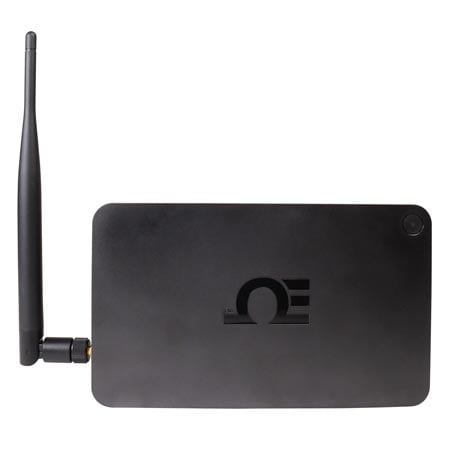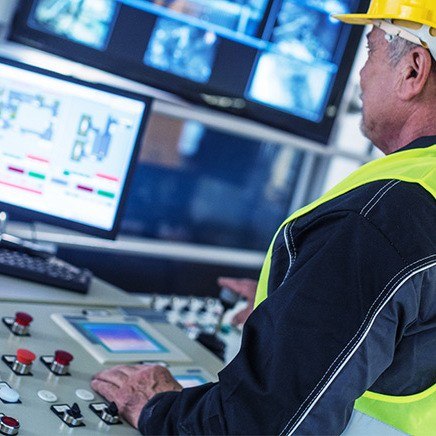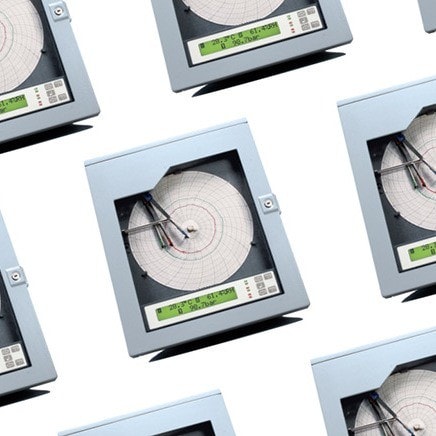As energy efficiency and sustainability become top priorities across most sectors, many industrial manufacturers face a tough challenge:
How do we keep up and go green?

For facilities that feature older systems, modernization can seem daunting: the cost, complexity, and overall disruption of a complete overhaul is a hurdle many see as too high. The solution lies in retrofitting – targeted upgrades that extend system life, improve performance, and, ultimately, help meet environmental goals.
A key part of this strategy is advanced sensing technology - such as IIoT-enabled temperature probes and wireless pressure transducers. By integrating precise, reliable sensors like these into existing systems, manufacturers can make smarter, data-driven decisions that reduce waste, optimize performance, and lower their environmental impact.
What Does 'Going Green' Really Mean?
In industrial operations, “going green” doesn’t mean sacrificing performance. It's aim is to make existing systems more efficient, reliable, and sustainable. Green retrofits focus on targeted upgrades that reduce resource use and environmental impact.
Some common goals of green retrofitting for industrial applications include:
- Reducing energy consumption in core systems like HVAC, pumps, and compressors. According to the U.S. Department of Energy (DOE), motor-driven systems account for approximately 69% of electricity use in U.S. manufacturing facilities – making them a key opportunity for savings (U.S. Department of Energy, Motor Systems Market Assessment, 2020).
- Minimizing waste by managing resources more efficiently. For example, the Compressed Air and Gas Institute reports that unaddressed leaks can waste 20-30% of a compressed air system’s output (Compressed Air and Gas Institute (CAGI), Compressed Air System Best Practices, 2021). Monitoring and addressing leaks will reduce unnecessary losses and lower operating costs.
- Extending equipment life through condition-based maintenance. The DOE notes that predictive maintenance can reduce equipment breakdowns by 70% and lower maintenance costs by up to 30%, compared to reactive approaches (U.S. Department of Energy, Operations & Maintenance Best Practices: A Guide to Achieving Operational Efficiency, Release 3.0, 2010). Sensors that track vibration, temperature, and pressure can help detect problems early.
- Supporting compliance with automated, accurate data. Whether it’s monitoring energy usage, emissions, or water discharge, facilities need reliable data to meet EPA and ISO 14001 environmental standards, as well as internal sustainability reporting goals.

These types of improvements support not only environmental goals – they also lead to lower utility bills, fewer unplanned outages, and longer equipment life.
Enhancing Legacy Systems with Smarter Sensing Solutions
To a large extent, achieving these goals depends on visibility – an advantage provided by smart-enabled, high-performance sensors. Without accurate, timely data, it’s nearly impossible to know where waste is occurring, how systems are performing, or when maintenance is truly needed. By adding real-time data to existing systems, manufacturers can detect inefficiencies, automate responses, and continuously improve performance.
| Factor | Retrofitting with Sensing Solutions | Full System Replacement |
|---|---|---|
| Upfront Cost | Lower investment — sensors installed on existing equipment. | High capital cost — new equipment, infrastructure, and training. |
| Downtime | Minimal — many sensor retrofits require little to no interruption. | High — full shutdowns, installation windows, and startup time. |
| Implementation Speed | Fast — often completed in days. | Slow — may take weeks or months. |
| Installation Risk | Low — non-invasive installs reduce contamination or system disturbance. | High — especially in sanitary or hazardous environments. |
| Scalability | Easy to scale — add sensors over time as needs evolve. | Limited — major upgrades require large investment cycles. |
| Smart Integration | Sensors support IIoT, cloud monitoring, and analytics. | Modern systems often include digital tools, but at higher cost. |
| ROI Timeline | Faster — due to lower cost and operational continuity. | Slower — ROI depends on scale and production gains. |
High-Performance Sensors that Make Retrofitting Greener
Electromagnetic Flow Meters
Designed for both performance and ease of installation, the Series IEF Insertion Electromagnetic Flow Transmitter uses electromagnetic sensing to provide accurate, reliable velocity measurements for conductive fluids.
-
Advanced Features
- Digital local display with programmable outputs
- Modbus RTU and BACnet MS/TP communication
- Built-in diagnostics and multiple flow measurement units
- Designed for insertion into active lines without process shutdown
- Compatible with a wide range of pipe sizes and materials
- Enables precise flow monitoring of water, steam, or process fluids - reducing waste
- Helps detect leaks, monitor usage, and prevent overconsumption
Why They're Retrofit-Ready
What Makes It Green
Wireless Thermocouple & RTD Smart Sensors
The Omega Link SS-002 Smart Sensor offers versatile environmental monitoring solutions by combining internal sensing elements with the ability to integrate external sensors. The SS-002 series includes models that allow for external inputs such as 3-wire RTDs, thermocouples, or contact closures, providing flexibility for a wide range of applications.
-
Advanced Features
- Configurable external sensor options: Thermocouple, RTD, or contact closure
- Built-in suite of internal sensors: Temperature, Humidity, Barometric Pressure, and Ambient Light
- Wireless transmission up to 1.2 km (3,937 feet) with standard AA batteries; up to 3.2 km (10,499 feet) when powered via USB
- AES-256 encrypted wireless link for secure data transmission
- Local data logging capability up to 10,649 data points
- One-button pairing for easy setup
- Free Omega Link Standard Cloud service accessible from any connected device
- Easily integrates with existing systems without the need for extensive modifications
- Wireless design reduces installation complexity and costs
- Versatile sensor options allow for customization based on specific application needs
- Enables precise monitoring of environmental conditions, leading to optimized energy usage and reduced waste
- Supports data-driven decision-making for sustainability initiatives
How They Assist with Retrofits
What Makes It Green
Differential Pressure Sensors
The Series MSX Pro Magnesense® Differential Pressure Transmitter is a high-performance solution designed to meet stringent industry standards, offering exceptional stability for critical building performance applications.
One of the key features of the MSX Pro is its wide range of configurable pressure outputs – supporting pressure measurements in Pa, mm w.c., and in w.c. These can be set in either unidirectional or bidirectional modes, allowing for flexibility in various applications. Additionally, the transmitter offers both linear pressure output and linear velocity output, with built-in square root extraction for velocity calculations. This expanded functionality makes the MSX Pro suitable for applications that require flow measurement, as it can directly calculate flow rates from differential pressure.
-
Advanced Features
- Field-selectable pressure ranges and outputs
- LCD display with intuitive setup
- BACnet and Modbus communication
- Easy panel or duct mount options
- Longtime industry standard for filter monitoring and air balancing
- Detect clogged filters early to reduce fan load
- Maintain optimal airflow and HVAC efficiency—especially in cleanrooms, hospitals, and labs
Why They're Retrofit-Ready
What Makes It Green
IIoT Gateways and Cloud Data Loggers
The GW-001 Series Gateway connects Omega Link Smart Sensors to the Omega Link Cloud for remote data access via PC, tablet, or phone. Using Sub GHz Frequency Hopping Spread Spectrum (FHSS), it supports long-range communication, with a transmission range of up to 1.2 km on AA batteries and up to 3.2 km in range boost mode with an external 5V USB power supply.
Supporting up to 256 sensors, the GW-001 provides scalability for growing systems. Ethernet connectivity ensures fast, reliable cloud access, while the built-in web server offers local access for added convenience.
The gateway pairs easily with sensors and automatically appears on your Omega Link Cloud account, streamlining setup and reducing installation time. Local data logging ensures that data is protected during network or power outages, preventing data loss.
-
Advanced Features
- Supports up to 256 smart sensors
- Transmits data to Omega Link Cloud for remote monitoring
- Provides insights into device activity with alarms and alerts
- Seamless integration with exisiting systems
- Comapct and versatile design
- Reduces the need for on-site checks
- Enables proactive maintenance and system-wide data analysis for energy optimization
Why They're Retrofit-Ready
What Makes It Green
Contact a DwyerOmega Expert Today!






